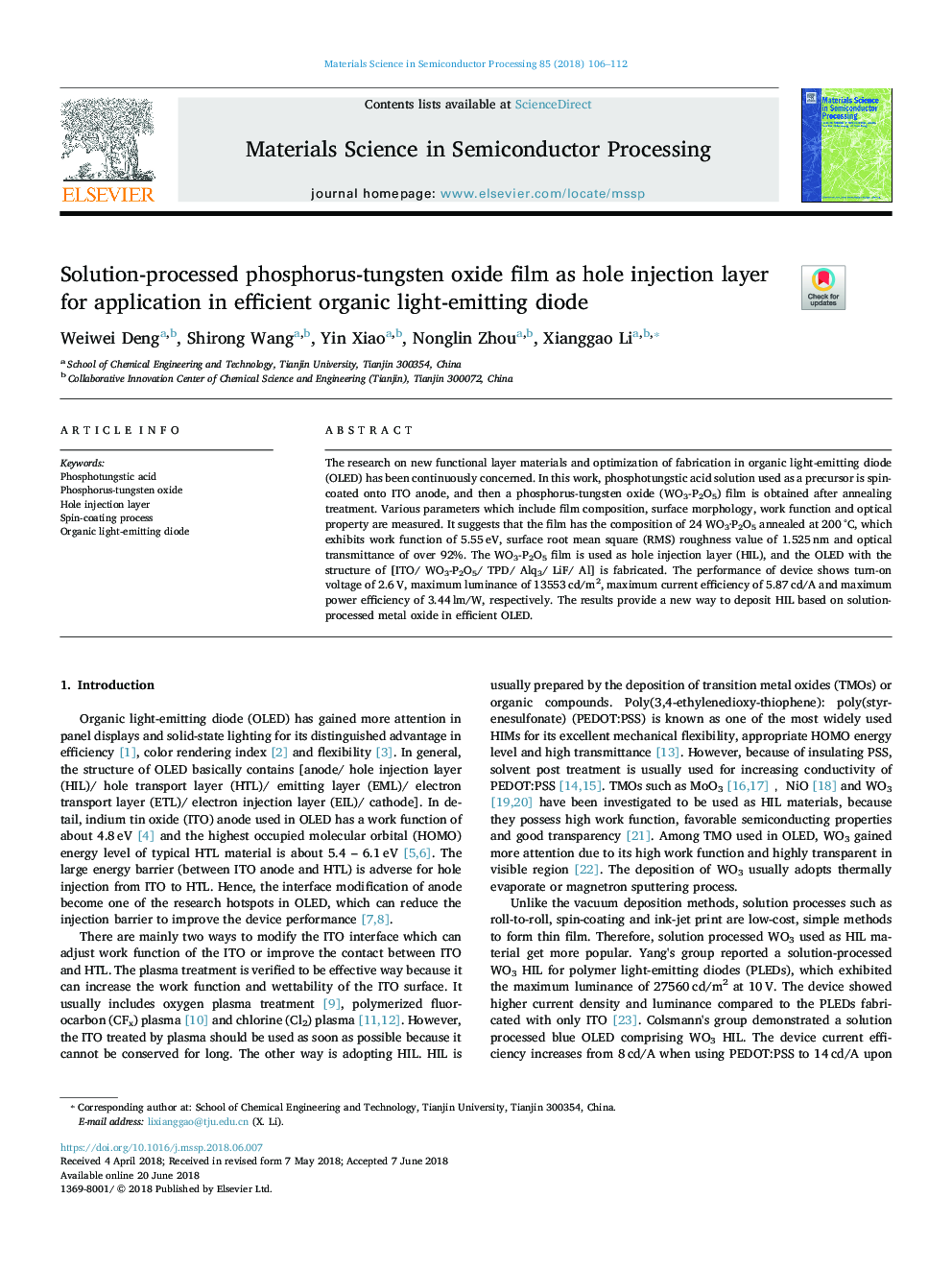| Article ID | Journal | Published Year | Pages | File Type |
|---|---|---|---|---|
| 7117511 | Materials Science in Semiconductor Processing | 2018 | 7 Pages |
Abstract
The research on new functional layer materials and optimization of fabrication in organic light-emitting diode (OLED) has been continuously concerned. In this work, phosphotungstic acid solution used as a precursor is spin-coated onto ITO anode, and then a phosphorus-tungsten oxide (WO3-P2O5) film is obtained after annealing treatment. Various parameters which include film composition, surface morphology, work function and optical property are measured. It suggests that the film has the composition of 24 WO3·P2O5 annealed at 200â¯Â°C, which exhibits work function of 5.55â¯eV, surface root mean square (RMS) roughness value of 1.525â¯nm and optical transmittance of over 92%. The WO3-P2O5 film is used as hole injection layer (HIL), and the OLED with the structure of [ITO/ WO3-P2O5/ TPD/ Alq3/ LiF/ Al] is fabricated. The performance of device shows turn-on voltage of 2.6â¯V, maximum luminance of 13553â¯cd/m2, maximum current efficiency of 5.87â¯cd/A and maximum power efficiency of 3.44â¯lm/W, respectively. The results provide a new way to deposit HIL based on solution-processed metal oxide in efficient OLED.
Related Topics
Physical Sciences and Engineering
Engineering
Electrical and Electronic Engineering
Authors
Weiwei Deng, Shirong Wang, Yin Xiao, Nonglin Zhou, Xianggao Li,
